Bryan Pearson's Blog, page 31
November 17, 2014
Apple Pay: The Best Thing to Happen to Loyalty Since…
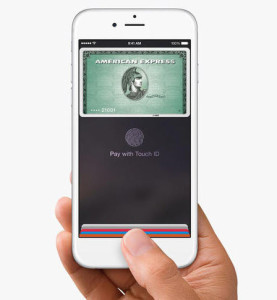 Once again loyalty marketers are finding new opportunities at their fingertips, this time courtesy of Apple.
Once again loyalty marketers are finding new opportunities at their fingertips, this time courtesy of Apple.
The computer maker’s Apple Pay service, which offers one-touch processing, also touches on a critical issue for merchants: the need for a long-term plan on where digital fits into an organization’s loyalty landscape. But is Apple the answer?
The technology has many financial institutions and merchants buzzing because of its security features. With each purchase, Apple Pay generates a unique code used only once and then discarded. This practice, called tokenization, eliminates the need for the consumer to produce a credit card. It also sharply reduces the value of the data to potential thieves.
The issue, for merchants, is Apple Pay also diminishes the ability to track consumer behavior. This is among the reasons why Walmart and others have dismissed Apple Pay, according to news reports.
The Apple Pay scenario exemplifies not only the importance of customer data to merchants, but the fine balance they are forced to strike today between the need for security and the need for customer data. Enter the potential for loyalty programs, which can capture consumer purchase (and non-purchase) activity through a separate unique identifier. Apple Pay can provide security, while an integrated rewards program can generate the data insights.
No sooner had I put my thoughts to paper (or screen) than Apple had put its finger on a possible solution. On Nov. 10 it announced the launch of the Barclaycard Visa with Apple Rewards credit card, offering Apple customers rewards in the form of Apple store gift cards.
No word yet on whether Apple Rewards will work with Apple Pay, but it is not unrealistic that Apple would reward users for making purchases on the iPhone. This may sound enticing for merchants that want to partner with Apple, but I don’t see how it would benefit retailers that have a loyalty scheme tied to their own credit card or as a stand-alone program. More likely, any reward element would benefit Apple.
Which leads me to believe that Apple Pay has solved only half the problem – the security issue. Tokenization may be the hottest topic in the payments circuit since chip cards, but it doesn’t resolve the issue for the overall payment industry – especially in a world that is increasingly data driven. And this leads to a key challenge for Apple: If masking the payment data means that only a portion of retailers will join Apple Pay, then it may blunt the ability of a market mover like Apple to accelerate the adoption of mobile payments.
This puts the marketer’s finger on a different issue: mobile acceptance, and just how many parties have to buy in.
November 12, 2014
November 12: Loyalty Links & Likes
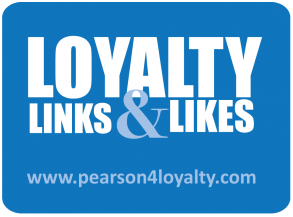 Customer Loyalty in the Age of Big Data – Knowledge@Wharton
Customer Loyalty in the Age of Big Data – Knowledge@Wharton
While many businesses have embraced the idea of big data and analytics, not all of them are properly using it to make business decisions. This item illustrates that using big data to engender customer loyalty takes more than just acquiring raw data; it requires having the right data and knowing how to use it.
Brands: Why You Need Engagement-Based Loyalty – BizReport
This Q&A with PowerReviews CEO Matt Moog explores the differences between transactional and engagement loyalty. Brands over the past few years began placing a stronger emphasis on engagement loyalty as they start to see the benefits of deeper relationships with customers, who then share their affinity for a brand with others.
Building Customer Loyalty Through Technology – National Retail Federation
This article highlights some of the lessons learned at the recent Shop.org Summit, and explains why e-commerce technology, with integrated personalization and analytics, can help foster loyalty across numerous channels.
The Longest Lasting Emotions in Customer Experience – Forbes
Recent research released from the University of Leuven, in Belgium, analyzed which emotions last the longest and why. This article breaks down the results of the study and what implications it has on the emotional aspects of the customer experience.
Loyalty Programs and Fraud: What You Need to Know – Conde Nast Traveler
With 70% of the $14 trillion loyalty market at risk of computer hacks and fraud, it’s clear that consumers need to understand the risk associated with giving their personal information to loyalty programs. This article points out that some loyalty currencies are every bit as good as cash, and need to be protected as such or risk customer backlash.
November 10, 2014
Igniting Conversation: A Q&A with Epsilon President Andy Frawley
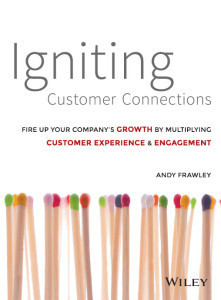 I should have known long ago that Andy Frawley had a book in him. The president of Epsilon, the world’s leading marketing agencies, is insightful, has broad experience and brings some interesting ideas to the table.
I should have known long ago that Andy Frawley had a book in him. The president of Epsilon, the world’s leading marketing agencies, is insightful, has broad experience and brings some interesting ideas to the table.
Frawley’s recently released book, “Igniting Customer Connections” details his own lessons learned over three decades of working with the smartest marketers, and biggest brands, in the world. He’s happy to share some of these insights with my readers. Our Q&A, covering new technologies, the power of amplification, and ROE² follows.
Question: In your book, you refer to “atomic moments of truth.” What are they and can you provide an example?
Andrew Frawley: Atomic Moments of Truth are pivotal instances when a consumer engages with a brand and, for marketers, it’s an opportunity to create value in a brand and a relationship, or destroy value in a brand and a relationship. To make the most of these moments, which are happening 24/7/365, marketers need to focus on the customer experience in each of these moments to deliver the most compelling and relevant content in the context of that moment.
A perfect example is Walgreens. Walgreens has a great loyalty program to reward its customers. But the company takes it further than just points for purchase behavior. Walgreens’ Balance Rewards members get rewarded for taking steps toward a healthier lifestyle. By linking their Fitbit devices to their Balance Rewards programs, consumers can earn 20 points for every mile they walk or run and 20 points per daily weigh-in. This is one way Walgreens is recognizing its customers for making a positive lifestyle change and rewarding them for this behavior. It also enables Walgreens to know even more about its customers to deliver relevant content – for example, if Walgreens knows I’m a runner it can tailor offers to me and try to encourage me to purchase through its retail channels vs. a sporting goods store or a supermarket.
Q: What is the one exercise you would warn marketers against when it comes to connecting with customers?
AF: Marketers today need to rethink how they communicate with customers – the channels, the cadence and the content. Cadence is one that we often focus on with our clients. Communicating too frequently will not serve the marketer in the long run. For example, during the holiday season, many brands will email their customers daily or multiple times a day. This approach may drive traditional metrics in the form of opens and clicks and may lead to short-term sales. However, it can also lead to an increase in opt-out rates during that period. And if you’re losing email subscribers, you’re losing long-term value and potential.
Consumers today have the power to turn off the message. Consumer empowerment cannot be underestimated. Consumers are making buying decisions all the time on their tablets (and) on their phones and they talk, tweet and blog about brands, which can make or break a brand’s reputation overnight. Brands need to communicate with their consumers where, when and how they want to be spoken to. The message must be relevant to them.
Q: Name three or four key steps to launching a good marketing process.
AF: Get data right: Not all data is good data. But with the right insights, you have the ability to capitalize on atomic moments of truth and deliver meaningful content in the appropriate context for that individual consumer.
Implement technology to automate processes: Build, buy or partner to employ technology that will allow you to be there in the moment, with the consumer, to make their experience with your brand more meaningful.
Focus on creative and strategy: It’s not simply enough to have the tools, technology and insights. You also need to connect on an emotional level and understand how the consumer feels. Creativity should not be underestimated.
Rethink measurement: Traditional measures of success don’t provide the full picture of what your consumers are doing AND how they are feeling about your brand. If you can understand both, you’ll be able to better determine marketing investment and better understand how to drive brand and business equity.
Q: You write how brilliant people can easily be swallowed up by technology and process, what measures can prevent this?
AF: In “Igniting Customer Connections,” I urge marketers to use technology to enable, not to distract. What I mean is that technology is only an enabler of change, not the change itself.
It’s important to line up the people, process, andtechnology to create an efficient, effective and fluid environment forplanning and executing marketing. People, process, technology – each of these enabling elements areimportant. But the connections between them are critical, since they areall interconnected and need to move ahead consistently and in lockstep.
It will not serve your organization well just to go out and buy softwareor services unless accompanied by a good strategy and by identifiedpeople who know how to use these new capabilities to get real results.
Q: What are three most important qualities in a good loyalty marketer?
AF: They listen to, recognize and understand their customers. Good loyalty marketers are paying attention to customer experience and engagement. They’re looking at not only what their customers do (how they interact with the brand), but also how they feel (their emotional connection to the brand).
They use this knowledge of experience and engagement, along with other customer data and insights, to understand their customers on an individual level and to create compelling recognition opportunities for them that will build not only loyalty in the present, but also in the future.
Q: And what are warning signs of a not-so-good marketer?
AF: Ineffective marketers do not listen to the customer. Instead they speak at them and do not engage in a two-way dialogue. This is likely because they lack the critical combination of insights, tools, creative and strategy to deliver relevancy. Instead they rely on a one-size-fits-all approach to customers and in today’s consumer-driven world. That will not work.
Q: Much is made about the importance of relevant communications, but how do you create it?
AF: Every customer is a unique collection of accumulated and ever-evolving values and choices. Until you look at the customer holistically, you will not be able to optimize the relationship and be truly relevant. The definition of a meaningful and relevant communication varies, but at the core it stems from knowing what the consumer wants and needs and connecting with (him or her) on an emotional level. This requires that you understand a variety of factors on the individual basis such as: how the customer feels about your brand, his or her aspirations; what he or she does (or has done) with your brand; where, when and how the customer wants to be communicated with; and more.
Q: When do you know the communication is relevant?
AF: Inthe book I talk about experience and engagement.
Experience means the emotional connection with a brand. How does it make you feel? Will your life be easier or your self-esteem higher? Experience is at the heart of the basic drive that (inspires) consumers to try a brand, to purchase a brand and to become loyal to it.
Engagement means acting. Actions the consumer can take include buying, posting, tweeting, liking, following, referring and more. But all require that consumers do something tangible to engage them with a brand.
Communication is relevant when it ignites a connection with customers – when it engages and influences their overall brand experience. And we can prove it. In “Igniting Customer Connections” we offer a financial framework that expands upon ROI with ROE², in which we use the power of experience and engagement to produce an actual financial measure.
Q: The marketer has finally connected with that valuable customer prospect. What is the next step?
AF: Connecting is definitely step one. From there it’s about creating a meaningful experience for the customer to evoke a deep emotional response. And simultaneously driving their engagement – and that engagement is going to vary based on your brand and your goals. Yes, purchase behavior is important, but we’ve found that it can be even more important if your customers are referring the brand to their friends and families and causing an amplification effect.
Q: What is the most important tool available for maintaining that connection today?
AF: Insights are one of the most important ways to maintain a connection with a customer. Data enables marketers to make informed and strategic decisions – about how to engage, what experience to create and whether your efforts were successful.
Q: Can you provide some examples of brands that do it well?
AF: A great example is FedEx. A few years ago, Epsilon worked with FedEx to launch its loyalty program with a simple mission to persuade small- and medium-sized businesses, which typically go to competitors for their shipping needs, to switch to FedEx. Successful loyalty programs go beyond points and redemption savings by introducing an emotional connection. FedEx already had sponsorship relationships with brands like NASCAR and the NFL. We worked to entice customers to use FedEx by offering them a meaningful reward opportunity. We found that auto parts dealers were a big market since they frequently use shipping services, and not surprising, they were also big NASCAR fans. By offering an aspirational reward such as getting their company logos on NASCAR race cars, FedEx was able to ignite a connection with these customers and prospects and drive both brand and business equity.
November 6, 2014
November 6: Loyalty Links & Likes
 An Ounce of Loyalty is Worth a Pound of Most Everything Else –
Business 2 Community
An Ounce of Loyalty is Worth a Pound of Most Everything Else –
Business 2 Community
A review of the 2014 Brand Keys Loyalty Leaders list, which includes industry giants like Apple, Google, Amazon and Samsung, but also includes 36 brands that are new to the list and represent new categories that previously didn’t break the top 100.
Nobody Loves You: Demystifying Brand Loyalty – The Guardian
Contradictory views of loyalty marketing are causing riffs between brand owners as marketing in general has shifted towards being more relationship-oriented. So how do brands measure the success of their programs beyond simply tallying up repeat purchases?
Poor Customer Care is Hurting M-Commerce Payments – Payments Source
As consumers increasingly shift their buying habits from in-store retail to mobile commerce, they are also shifting their expectations of customer service. If retailers can’t transition the customer care they provide in stores over to the web, they risk an increase in abandoned carts.
The Big Mystery: What’s Big Data Really Worth? – The Wall Street Journal
In the world of data-driven retail, companies are building new plans that revolve entirely around the collection and sale of said data. Do companies account for time employees spend collecting data as an expense or capital investment?
Customer Experience Should Not Be the Job of Just One Person - Entrepreneur
As businesses start to rely on the customer experience to drive loyalty, it’s important to remember that this can create new challenges for a business. This article looks at the merits of delegating this responsibility to a team, rather than to one individual.
November 4, 2014
Loyalty Gamification: Five Tips for a Good Hand
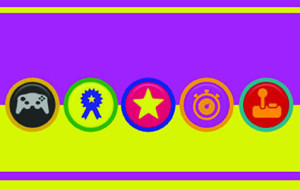 In the movie “Cool Hand Luke,” the title character earns his nickname after bluffing through a poker game and then stating, “Sometimes nothing can be a real cool hand.” That may work in the movies, but in loyalty marketing, consumers are not so easy to dupe.
In the movie “Cool Hand Luke,” the title character earns his nickname after bluffing through a poker game and then stating, “Sometimes nothing can be a real cool hand.” That may work in the movies, but in loyalty marketing, consumers are not so easy to dupe.
Gamification is among the buzziest trends in loyalty marketing these days, and while it can be a compelling tool for early engagement, its long-term effectiveness depends on the nimbleness of the hands behind the game. Put another way: The gaming experience will only be as good as the gaming provider.
In fact, gaming might not be worth the investment for some brands, or serve as the best device for engaging a specific core market. Executed poorly, or with a blind spot for the brand’s message and meaning, gamification could hurt an organization. However, if loyalty data is applied to shape the game rules, its messaging and rewards, the probability of success rises.
The trick is finding a fitting gamification provider for a particular brand. Here are five tips for finding that best-qualified gamification expert:
Limit the odds: An increasing number of gamification providers are emerging across all industries. Loyalty marketers should narrow their search to those that specialize in loyalty initiatives, including the related data analysis. A good gamification expert will be able to glean meaning from the data and use it to better craft entertainment and initiatives that align with a brand’s particular customer.
Get security: Gamification introduces opportunities not only to better engage customers, but also to better understand them through real-time activity insights. That data should be treated like $1,000 poker chips. Marketers should ask the gaming company to provide reliable protocols regarding how it gathers, stores and ultimately destroys data, and these should be in close alignment with those of the hiring brand.
Line up the aces: When an organization assigns its most qualified data analysts to work closely with the gamification experts, its chances are good that the rewards will be relevant to its best customers. This means making the rules clear and the win rates attainable so customers are actually realizing a benefit (one that matters) in return for their playing time.
Read the dashboard: Any gamification strategy should be established to resolve a timely customer issue. Loyalty marketers would benefit by asking gamification candidates to demonstrate their troubleshooting capabilities and provide reliable examples of how they solved a client’s customer engagement or retention issues. References are a bonus.
Find the jackpot: Gamification strategies require money and marketers, like gamers, want a return on that investment. One way marketers can ensure solvency is by hiring a gamification company that is solvent. There is no sin in asking for financials or running a credit check. If the company will not or cannot provide clients for a reference, the marketer should consider it a red flag.
In short, a gamification provider should be vetted like a construction company or baby sitter, because it will be handling an organization’s most valuable asset: it’s brand. There are a lot of shiny-object aspects to the gamification industry, and a marketer can get caught up in the dazzle of it. But when all is said and done, a cool head and hand will earn the reward.
October 29, 2014
October 29: Loyalty Links & Likes
 Seven Customer Experience Case Studies that Generated Loyalty and ROI - Econsultancy
Seven Customer Experience Case Studies that Generated Loyalty and ROI - Econsultancy
From Coca-Cola to Cadbury, these corporate case studies are great examples of companies offering personalized experiences that go deeper than simply ecommerce transactions.
Building Trust, Loyalty and the Revenue Pipeline with Content Marketing – Marketing Interactive
These days, consumers are subconsciously conditioned to ignore advertising, which can pose difficulties to traditional marketers. One way to break through this barrier is by engaging the customer with content marketing, helping them make smarter decisions.
Q&A: PepsiCo on Rewarding for Engagement – COLLOQUY
Mike Scafidi of PepsiCo offers some insight into how Pepsi redesigned its loyalty initiatives with a focus on customer experience.
Tesco’s Downfall is a Warning to Data-Driven Retailers – Harvard Business Review
With the recent resignation of its chairman and a market value at an 11-year low, some question Tesco’s operating strategy and wonder why the merchant is struggling despite its frequent declarations of being data-driven and analytical. The Harvard Business Review looks at what this might mean for other data-driven retailers.
Achieving Loyalty in the “Age of the Consumer” – Business 2 Community
The so-called “Age of the Consumer” has given people instant, real-time access to product information and customer reviews that can divert a shopper from a brands’ goal of purchasing. This article looks at some ways to reach the coveted consumer through the constant haze of technology .
October 27, 2014
Four Tricks to Treating Loyal Customers (and Avoiding a Haunting Oversight)
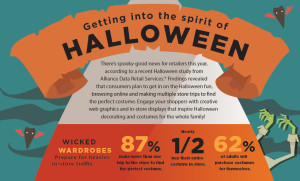 If ever there were a masked opportunity in loyalty marketing, I’d call it Halloween.
If ever there were a masked opportunity in loyalty marketing, I’d call it Halloween.
Retailers have been quite clever in scaring up additional sales of candies, costumes and decorations, but few appear to be taking advantage of the role their loyalty programs can play in generating additional sales and follow-up purchases. An informal online search yielded few such promotions, and other than an occasional coupon for candy, I’ve not personally seen anything.
That can be a billion-dollar miss. Americans are projected to spend $7.4 billion on Halloween items this year, according to the National Retail Federation (NRF). More than half expect to spend more on Halloween than they do on Mother’s Day or Father’s Day, according to the 2014 Halloween Happenings Survey by Alliance Data Retail Services. Twenty-two percent of those surveyed expect to spend more this year than in 2013.
That shakes out to about $105 in spending on average per household, according to the survey. A rewards program can help goose that number up and generate future holiday sales, by capturing specific purchase data that help merchants understand what motivates their customers.
Merchants and marketers should ask themselves: Have we considered the link between heavy Halloween “users” and other holiday events like Christmas? Can we analyze customer purchases this year and then use that data to promote earlier activity next year? Or, simply, what relevant communications can we use to engage customers and enable them to understand the next big theme for Halloween?
Here are a few ways loyalty marketing can do the trick to improve sales in 2014 and 2015:
Use Halloween to promote Christmas: Post-Halloween sales can be used to promote pre-holiday purchases. Merchants could do this by offering reward program members double points or discounts on Christmas decorations when they purchase Halloween candy, costumes and other items off the clearance shelf.
Hold candy contests: Retail chains can pursue partnerships with candy manufacturers and host Halloween contests tied to their loyalty programs. If the shopper purchases the bag of candy with the special code, he or she receives a prize, like a $100 shopping trip or $50 in manufacturer coupons. Chances are the winning shopper will end up spending more.
Generate costume ideas early: 62 percent of adults will buy Halloween costumes for themselves this year, according to the Alliance Data research. A reward program can record those purchases and the merchant can send those same customers costume ideas early in September 2015, with a discount as enticement.
Put a howl in Halloween: Halloween is not just for kids and adults. American consumers plan to spend $350 million on costumes for their dogs, cats and other pets, according to the NRF. Merchants can offer reward program members discounts on costumes with pet food purchases or hold social media contests during which the pet costume that gets the most votes wins access to a special in-store event.
There are many additional ways loyalty marketers can help merchants better engage their Halloween customers. With reliable rewards program data they can produce treats that are – unlike that box of raisins – always relevant to the recipient.
October 22, 2014
October 22: Loyalty Links & Likes
 Customer Satisfaction Can Kill: The Deadly ‘Who Cares’ Phenomenon and Customer Loyalty – Forbes
Customer Satisfaction Can Kill: The Deadly ‘Who Cares’ Phenomenon and Customer Loyalty – Forbes
Research has found that self-reported satisfied customers are not as likely to make repeat purchases as previously thought. This article looks at the reasons for this and examines some methods businesses can use to bring the customer back.
Five Strategies to Instill Brand Loyalty in Today’s Young Customers – Entrepreneur
Family and friends play a large part in influencing the purchasing decisions of young people. This article covers five strategies designed to engage younger generations with a brand.
52 Ways Major Brands Leave Their Rivals… in the Dust – COLLOQUY
Geoff Smith of CrowdTwist offers a sampling of its newly released book, 52 Ways to Differentiate a Loyalty Program, that examines how brands like Virgin Airlines and Lancome distinguish themselves from the competition.
Two Numbers: Customer Loyalty Cards Don’t Add Up – Newsweek
The benefits of customer-loyalty programs are clear for businesses, but for customers the rewards may be less clear. Newsweek looks at this disconnect and examines the trade-off customers make when they give up their valuable data.
How To Improve Customer Winback With Quality Data – Business 2 Community
It’s generally easier and cheaper to target existing customers than attracting new ones. By maximizing the value of customer data, a company can easily take the necessary steps to win back customers.
October 20, 2014
Turning Data Into Dollars: 4 Steps for Valuing Insights (Ahead of Regulators)
 For many marketers today, the key challenge in collecting customer information is figuring out how to best use it. In the near future, that challenge may change to putting a dollar sign on the data.
For many marketers today, the key challenge in collecting customer information is figuring out how to best use it. In the near future, that challenge may change to putting a dollar sign on the data.
Consumer data and similar intangible assets could be worth more than $8 trillion, according to a recent Wall Street Journal story, citing Leonard Nakamura, an economist at the Federal Reserve Bank of Philadelphia. “That’s roughly equivalent to the gross domestic product of Germany, France and Italy combined.”
When those insights start making money, regulators pay attention. The Kroger Co., for example, is estimated to sell $100 million worth of data to suppliers such as Procter & Gamble Co. and Nestlé, according to the report. Sure enough, in September, members of the Financial Accounting Standards Board were advised to research intangible assets again; the third time since 2002.
It is no longer up for debate that customer data is becoming a more valued and tangible asset, as is evidenced in FASB’s repeated review into how to record these elements in financial records. Regulatory agencies are already pointedly asking companies to share their accounting methods regarding reward points and similar currencies. The Securities and Exchange Commission, for example, in the spring asked CVS/pharmacy to explain how it accounts for its outstanding loyalty currency, as it was not detailed in its quarterly report.
(CVS responded that while its ExtraCare expenses are charged to its cost of revenue, it does not believe the liability of its program offerings are material due to their short-term duration.)
When it comes to general data, however, those quantifications get murky. Consider that the value of today’s assets may change markedly in six months as consumer behaviors change, for instance. Further, the cost of time spent collecting and analyzing data would offset that value.
Despite these variables, there are some general guidelines marketers can follow to better prepare for regulatory guidelines when they come, and to understand the value of their data:
• Consider a CDO: Roughly 100 large organizations employ a chief data officer, according to research firm Gartner. Companies that manage large amounts of data will likely be better off in a year if they appoint someone now to manage information use. They also should ensure the position is well integrated with the executive team so everyone knows his or her role.
• Be perseverant: As earlier stated, data is fluid. Today’s best customer may be gone tomorrow, or replaced by another with completely different purchase preferences and behaviors. If a company is serious about tracking the value of its data assets, it needs to do so diligently and flexibly. This requires a regular auditing schedule and accountability. Companies that involve all logical teams in the process will likely fare better in this exercise.
• Reach out: Accounting strength comes in numbers. Merchants that lack the resources to invest in a suite of in-house data analysts have the opportunity to benefit from third-party consultants. Fortunately, several organizations specialize in loyalty marketing and data analysis, including ours.
• Keep future value in mind: Concentrate on efforts to capture only the data the organization needs, recognizing in the process that the data not only is a valuable asset now, but in the future the acquisition, management and maintenance of that data asset may have beneficial accounting implications.
The customer experiences that data insights make possible can be, to quote MasterCard, priceless, but the value it brings to companies is not. Accounting standards are likely just a matter of time, and smart organizations will be ready.
October 16, 2014
October 16: Loyalty Links & Likes
 Apple Pay’s Impact on Restaurant Loyalty Marketing – QSRweb
Apple Pay’s Impact on Restaurant Loyalty Marketing – QSRweb
Long-term customer retention is difficult for restaurants, and estimates are that two-thirds do not have any kind of loyalty program at all. This piece examines the benefits mobile payments, specifically Apple Pay, can bring to the restaurant industry.
High-tech Options Replace the Lowly Loyalty Punch Card – The Globe and Mail
The days of the stamp card as the de facto currency of customer rewards programs are nearing their end. This article takes a look at some examples of programs designed to help Canadian small businesses create loyalty and engagement without expending the resources to create their own programs.
Gamification: Four Mistakes and Pitfalls to Avoid – COLLOQUY
The seventh in an eight-part series by gamification expert Gabe Zichermann examines some common mistakes that loyalty marketers make when implementing a gamification strategy and how to avoid them.
Keys to Being Social: Loyalty – Business 2 Community
This article examines the human psychological basis for loyalty, what it looks like on a personal level and how it translates into a customer’s loyalty to a business.
Retailers: Why You Need Everyday Earners Not Just Occasional Shoppers – Biz Report
Some brands spend so much time working on acquiring new customers that they neglect to nurture relationships they have with their most loyal and frequent customers – who might spend more if they we’re engaged appropriately.
Bryan Pearson's Blog
- Bryan Pearson's profile
- 4 followers



